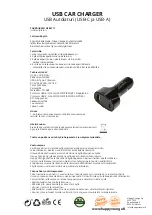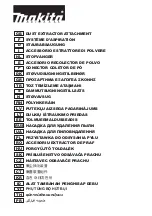
MX-FNX9 ELECTRICAL SECTION 10 – 1
MX-FNX9
Service Manual
[10] ELECTRICAL SECTION
1. Circuit descriptions
A. MX-FNX9
(1) General
This circuit controls transport, alignment (bundle alignment), staple,
and exit of paper discharged from the main unit.
This circuit is composed of sensors, switches, the circuit which pro-
cesses signals from the main unit, the circuit which drives motors
and solenoids, the CPU, and its peripheral circuits.
(2) Circuit descriptions
a. Communication circuit
This circuit is the communication circuit with the main unit.
TxD and DTR are data to be sent from the main unit to the inner fin-
isher. RxD and DSR are data to be sent from the inner finisher to
the main unit. The reset signal from the main unit is inputted to
RESET.
b. Sensor input circuit
1)
Tray upper limit sensor (FULD)
The tray upper limit sensor (FULD) employs the photo inter-
rupter in which the light emitting diode and the photo transistor
are integrated.
The upper limit is detected by interruption of lights with the
light-shielding plate.
Signals are inputted to the multiplexer (IC14-13pin) through
the noise filter of R11 and C1.
The logic of the signal inputted to the CPU is L for the tray
upper limit position.
R1 is the current-limiting resistor of the light emitting diode. R6
is the load resistor of the sensor.
2)
Tray intermediate lower limit sensor (FMLLD)
The tray intermediate lower limit sensor (FMLLD) employs the
photo interrupter in which the light emitting diode and the
photo transistor are integrated.
The lower limit is detected by interruption of lights with the
light-shielding plate.
Signals are inputted to the multiplexer (IC14-14pin) through
the noise filter of R12 and C2.
The logic of the signal inputted to the CPU is L for the tray
intermediate position.
R2 is the current-limiting resistor of the light emitting diode. R7
is the load resistor of the sensor.
3)
Tray lower limit sensor (FLLD)
The tray lower limit sensor (FLLD) employs the photo inter-
rupter in which the light emitting diode and the photo transistor
are integrated.
The lower limit is detected by interruption of lights with the
light-shielding plate.
Signals are inputted to the multiplexer (IC14-15pin) through
the noise filter of R13 and C3.
The logic of the signal inputted to the CPU is L for the tray
lower limit position.
R3 is the current-limiting resistor of the light emitting diode. R8
is the load resistor of the sensor.
4)
Tray paper empty sensor (FBED)
The tray empty sensor (FBED) employs the photo interrupter
in which the light emitting diode and the photo transistor are
integrated.
Paper empty is detected by interruption of lights with the lever-
type actuator.
Signals are inputted to the CPU (IC10-74pin) through the noise
filter of R14 and C4.
The logic of the signal inputted to the CPU is L when paper is
loaded to the tray, and H for paper empty.
R4 is the current-limiting resistor of the light emitting diode. R9
is the load resistor of the sensor.
5)
Paper surface sensor 1 (FSLD1)
The paper surface sensor 1 (FSLD1) employs the photo inter-
rupter in which the light emitting diode and the photo transistor
are integrated.
The paper surface is detected by interruption of lights with the
lever-type actuator.
By use of Q16, the logic of signal when the connector is dis-
connected is made the same as when light is emitted to the
sensor.
Signals are inputted to the CPU (IC10-88pin) through the noise
filter of R17 and C5.
The logic of the signal inputted to the CPU is H when light is
interrupted, and L when light is emitted to the sensor.
R5 is the current-limiting resistor of the light emitting diode.
R15 is the load resistor of the sensor.
Tray upper limit sensor (FULD)
Tray intermediate lower limit sensor
(FMLLD)
Tray lower limit sensor (FLLD)
Tray paper empty sensor (FBED)
Paper surface detection sensor 1
(FSLD1)
Paper surface detection sensor 2
(FSLD2)
















































